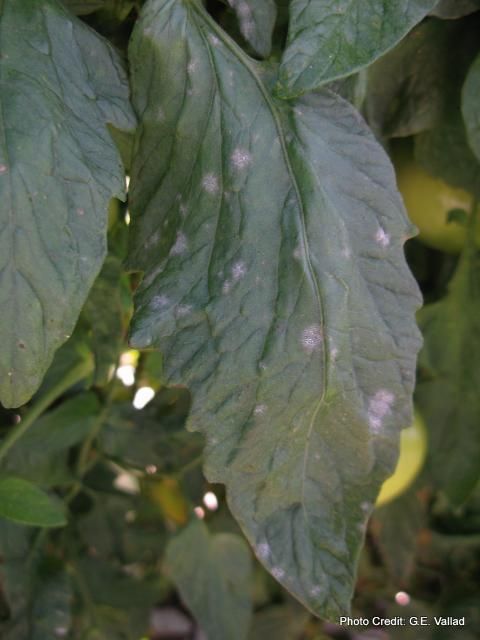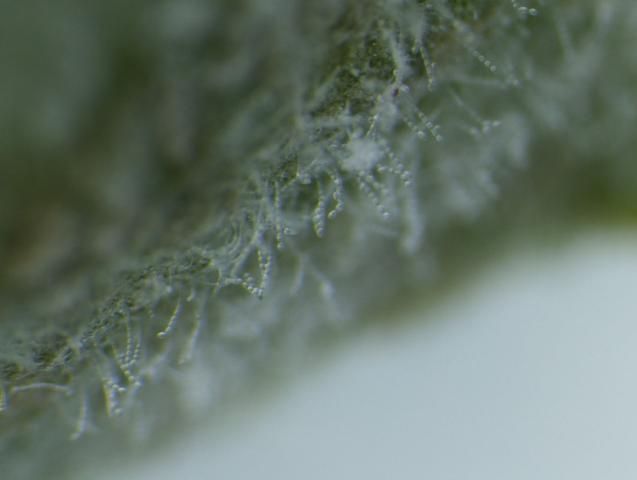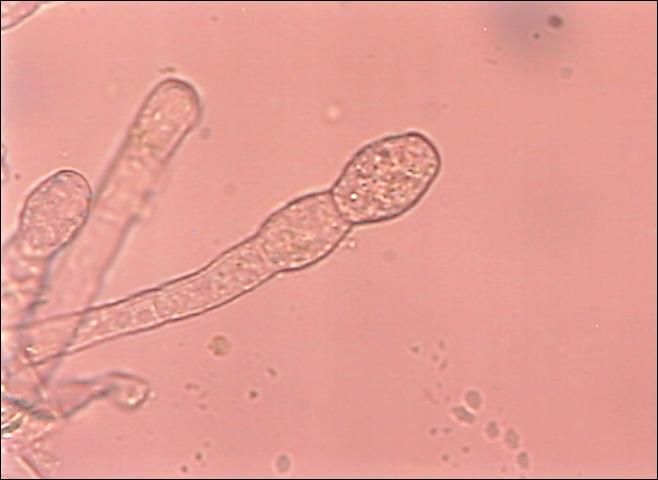Powdery mildew occurs on greenhouse-grown tomatoes and occasionally on tomatoes grown in vegetable gardens or in commercial fields in Florida. The fungus Oidium neolycopersici causes the disease. Powdery mildew of tomato occurs in California, Nevada, Utah, North Carolina, Ohio, and Connecticut in the United States. It is also found throughout the world on greenhouse and field-grown tomatoes. Losses in fruit production due to decreased plant vigor can reach up to 50% in commercial production regions where powdery mildew is severe. Although this level of damage has not been observed on tomatoes in fields in Florida, plants grown in greenhouses in North Florida reached 50%–60% disease incidence.
Symptoms of the disease occur only on the leaves. Symptoms initially appear as light green to yellow blotches or spots that range from 1/8 - ½ inches in diameter on the upper surface of the leaf (Figures 1 and 2).

Credit: G. E. Vallad, UF/IFAS

Credit: G. E. Vallad, UF/IFAS
The spots eventually turn brown as the leaf tissue dies. The entire leaf eventually turns brown and shrivels but remains attached to the stem. A white, powdery growth of the fungal mycelium is found on the top of leaves (Figures 1 and 3).

The disease is caused by Oidium neolycopersici in Florida. The perfect or sexual state, Erysiphae, is rarely seen in nature and never has been observed in Florida.
In western regions of the United States and other parts of the world, powdery mildew may also be caused by the fungus Leveillula taurica. These powdery mildew fungi are obligate parasites; they can only survive on a living host. The fungus produces specialized feeding structures called haustoria, which invade host cells to extract nutrients. The removal of nutrients from host cells causes the yellowing and eventual necrosis of tomato tissue. The plant is not killed by this disease but is progressively weakened, and productivity is greatly decreased.
The fungus reproduces by producing spores, conidia, which are borne on conidiophores. Close-ups of conidiophores bearing conidia is shown in Figures 3 and 4. Conidia are easily dislodged by the wind and carried long distances. The conidia land on leaves, where they germinate and enter the leaf through stomates. The fungus grows at moderate to cool temperatures. Epidemics have been noted during relatively dry conditions. The pathogen has a wide host range and probably survives on other hosts or volunteer tomato plants from season to season.

Greenhouses typically provide ideal conditions for disease development and spread. An integrated approach should be used to control powdery mildew in the greenhouse. Practices that maintain high relative humidity should be utilized. Infected plants should be removed from the house, which should be sanitized after production. Registered fungicides should be applied to plants as soon as symptoms are observed.
In the field, control measures have not been needed in Florida. However, if the disease were to become more problematic, control measures would include scouting, rouging of infected plants, use of resistant varieties, and spraying preventative chemicals.